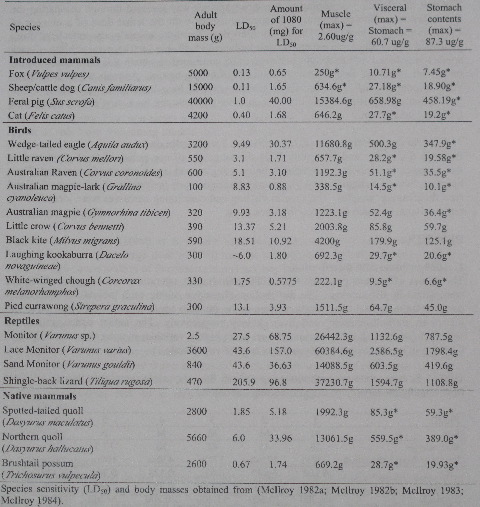Found this on feral.org
SODIUM FLUOROACETATE RESIDUE IN FERAL PIG (SUS SCROFA)
CARCASSES – IS IT A SIGNIFICANT SECONDARY POISONING HAZARD?2. Susceptibility of non-target species
The amount of sodium fluoroacetate required to receive a lethal dose (based on LD50), and
the amount of muscle, visceral tissue or stomach contents to be consumed to obtain this dose
of fluoroacetate was calculated for a range of likely non-target species (Table 2).
Table 2 Amounts of fluoroacetate tissue non-target species would have to ingest to receive.

- IMG_5507.jpg (99.07 KiB) Viewed 13281 times
From the discussion.
Based on the residue level of 2.6 ug/g, there appears to be little risk to native Australian
animals from consuming muscle from poisoned pigs. All native species examined in Table 2
need to consume in excess of 15% of their bodyweight to be at risk from eating muscle tissue.
Of the introduced mammals, dogs and foxes are most susceptible requiring consumption of
less than 5% of their bodyweight in muscle for a lethal dose (Table 2). However, the much
higher concentrations found in the viscera and stomach contents suggest that there is a
potential poisoning risk to many native animals from consuming these tissues.
Despite the potential risk, few non-target animals were confirmed to consume carcasses by
remote photography. Goannas readily consume flesh including viscera, but are at low risk
due to their high tolerance to fluoroacetate. However their feeding habits may increase the
exposure of other species to visceral tissues, increasing their likelihood of secondary
poisoning. Despite anecdotes suggesting a low impact on secondary consumers, further
assessments should be undertaken to assess the extent that non-target species consume such
tissues.
There is no such thing as bad weather.....only bad clothing. Norwegian Proverb




